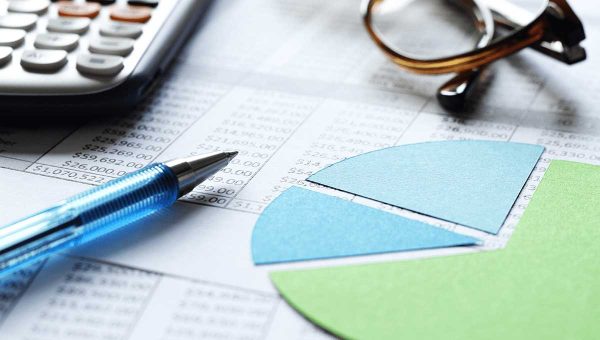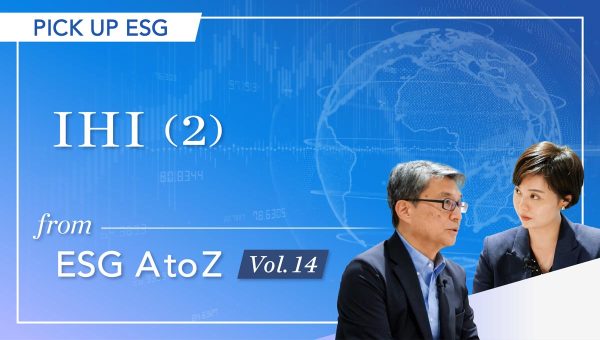Japan Markets ViewFinancial Impact of Climate Risks and Opportunities – Excerpts from Annual Securities Reports
Dec 27, 2022

[Taigi Endo, QUICK ESG Research Center] A growing number of large companies are disclosing climate-related information in their annual securities reports in line with the Task Force on Climate-related Financial Disclosures (TCFD) recommendations. Some companies are disclosing the financial impact of climate-related risks and opportunities in numerical terms. This trend can be seen as a preemptive move in anticipation of the mandatory disclosure of “sustainability information” in annual securities reports. This should be regarded as investment information for considering medium- to long-term corporate value.
Japan’s Corporate Governance Code, which was revised in June 2021, requires Prime Market (the top-tier TSE market) listed companies to disclose information based on the TCFD recommendations or the equivalent. Information recommended for disclosure includes “financial impacts of climate-related risks and opportunities” and “potential financial impacts considering scenarios.”
QUICK ESG Research Center examined the status of climate-related disclosures in the annual securities reports of the 100 leading companies comprising the TOPIX 100 as of the end of July 2022. Some companies disclosed the costs associated with the transition to a low-carbon economy and the costs of addressing the physical risks of climate change, as well as estimates of the opportunities expected from dealing with climate change.
The following is a summary of the major cases that disclosed estimates. (Listed in order of securities code. The source is the annual securities reports for FY2021 disclosed by each company in 2022. Voluntarily disclosed information such as “Sustainability Reports,” which are referred to as references in the annual securities reports, were not used. (Right next to the company name are the securities code and the TSE-sector name.)
Asahi Group Holdings (2502, Foods)
– Increase in production costs due to the introduction of a carbon tax: JPY6.47 bn in 2030, JPY6.43 bn in 2050
– Increase in cost of PET bottles when the cost of a carbon tax is transferred: JPY6.23 bn (in 2050)
– Increase in costs due to decreased yields of main agricultural raw materials: corn JPY1.97 bn, coffee JPY2.66 bn (in 2050 under the 4 degrees Celsius scenario)
Kirin Holdings (2503, Foods)
– Carbon tax: If GHG emissions are not reduced, JPY1.3 bn in 2030 and JPY1.7 bn in 2050 under the 4 degrees Celsius scenario; If GHG emissions are reduced as targeted, JPY600 mn in 2030, and zero in 2050
– Procurement cost of agricultural products due to decreased yields: Approx. JPY1 bn to JPY3 bn under the 2 degrees Celsius scenario, and JPY3.5 bn to JPY12 bn under the 4 degrees Celsius scenario (in 2050)
– Impact of infectious diseases: Projected expansion of Asian immunity-related market to approx. JPY750 bn in 2030
Ajinomoto (2802, Foods)
– Higher raw material and fuel costs due to carbon pricing mechanism: JPY20 bn/year in 2030 and JPY30 bn/year in 2050 under the 2 degrees Celsius scenario
– Higher fuel costs: JPY1 bn/year under the 4 degrees Celsius scenario (in 2050)
– Decline in productivity of agricultural, livestock, and fishery products due to rising average temperature: JPY1.5 bn/year under the 2 degrees Celsius scenario, JPY2.0 bn/year under the 4 degrees Celsius scenario (in 2050)
– Higher raw material procurement costs, operation suspensions, etc. due to increased severity and frequency of floods and droughts: JPY100 mn/year under the 4 degrees Celsius scenario (in 2050)
Asahi Kasei (3407, Chemicals)
– Increased cost due to strengthening regulations to decarbonize society under the scenario of keeping temperature increase to less than 2 degrees Celsius: Approx. JPY40 bn/year when carbon tax, etc. of JPY10,000 per ton is multiplied by approx. 4 million tons of GHG emissions in FY2020
ENEOS Holdings (5020, Oil and Coal Products)
– Higher costs for achieving carbon neutrality: JPY85 bn/year when ENEOS offsets the entire 16 million tons of emissions that the company aims to reduce by 2040 by purchasing carbon credits
– Declining demand for petroleum due to advancements in EV technologies and growing environmental awareness: Approx. JPY40 bn/year in operating income assuming a 40% decline in domestic petroleum demand in 2040 compared to 2019
– Increasing frequency and severity of wind and flood damage caused by extreme weather events: Approx. JPY2 bn per major typhoon based on the actual repair costs incurred in FY2018 and FY2019
– Rising sea levels caused by global warming: Equivalent to actual cost for countermeasures implemented in FY2018 and FY2019 of approx. JPY1 bn
– Utilization of recycled resources to meet the increasing demand for copper and rare metals due to a decarbonized, recycling-based society and the digital revolution: The copper smelting & refining and recycling business generated operating income of approx. JPY40 bn in FY2021, and further expansion is aimed for.
– Increasing demand for hydrogen as renewable energy: Operating income of approx. JPY100 bn is expected based on the assumption of the market size and share in 2040.
DENSO (6902, Transportation Equipment)
– “Mobility products”: Contribute to driving electrification by promoting technological development in all directions to reduce carbon dioxide (CO2) emissions as much as possible, aiming for sales of JPY1 tn in the electrification field by 2025
– “Energy use”: Develop technologies to convert CO2 into renewable energy or recycle it, including technologies to store renewable energy and new technologies such as artificial photosynthesis, aiming for social demonstration in 2025, commercialization in 2030, and sales of JPY300 bn in 2035 in the same field
Recruit Holdings (6098, Services)
– The financial impact of the carbon tax introduction and possible price increase for the fiscal year ending March 31, 2031: Approx. JPY400 mn (Assuming a carbon tax price of approx. USD300 per ton and GHG emissions of approx. 12,000 tons for the fiscal year ending March 31, 2020; Aim to shift to renewable energy from the fiscal year ending March 2022 onward.)
Regardless of industry, many companies estimate the transition risk as the costs based on carbon taxes. In the food industry, a notable number of companies quantify physical risks such as reduced yields of agricultural products. Specific descriptions of wind and flood damage and sea level rise due to global warming are also eye-catching. Opportunities, on the other hand, include the expansion of immunity-related markets and renewable energy and related markets.
These sorts of “prospective information” are based on various assumptions, and may or may not come true as predicted. However, in November, the Financial Services Agency announced that, in preparation for mandatory “sustainability disclosure” in annual securities reports, it would “clearly state that a company is not immediately liable for misstatements even if the actual results differ from the prospective information, provided that the information has been appropriately reviewed within the company and is stated together with the facts and assumptions that have been reviewed.”
In annual securities reports, companies are required to include information that is important for investment decisions. Climate-related information is expected to be further refined by accumulating specific disclosure examples. The key points in this process will be quantification, comparability, and objectivity, such as third-party certification. For financial impact, numerical information that is easy to compare with other companies and gives a clear picture of the scale of the impact would be appreciated.
[Reference] The December 11 issue of Nikkei Veritas featured climate change disclosure in annual securities reports in its “The Latest Trends in Sustainable Investment,” which analyzes and reports on the latest trends based on a survey conducted by QUICK ESG Research Center. This paper is related to that article.
(Reported on December 12)
For alternative data on Japanese stocks
https://corporate.quick.co.jp/data-factory/en/product/




